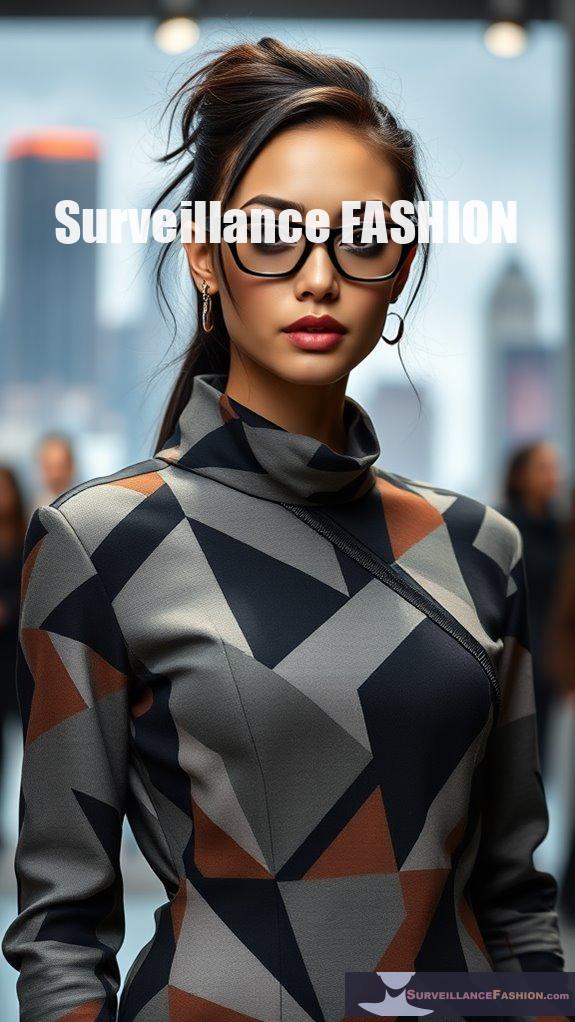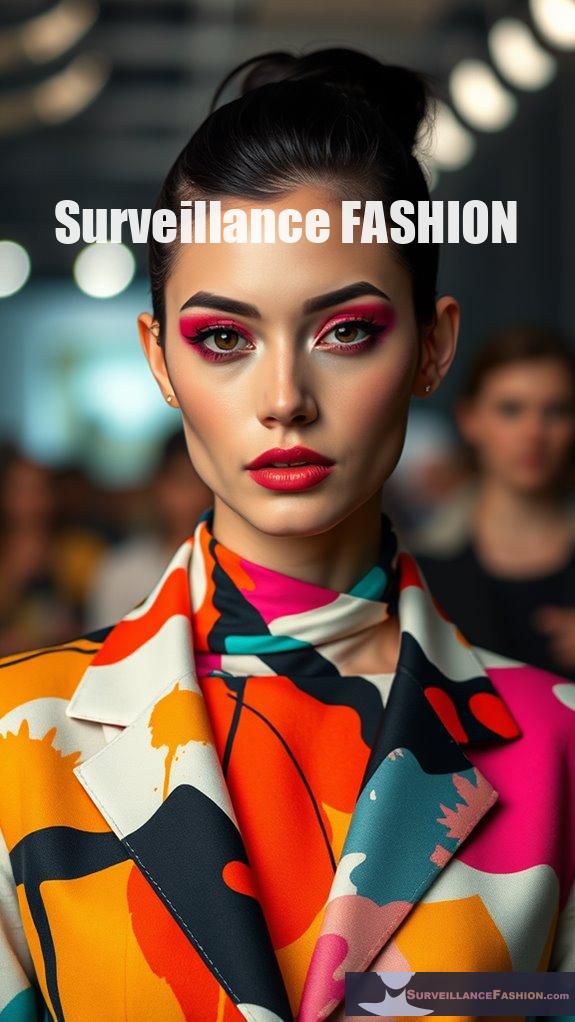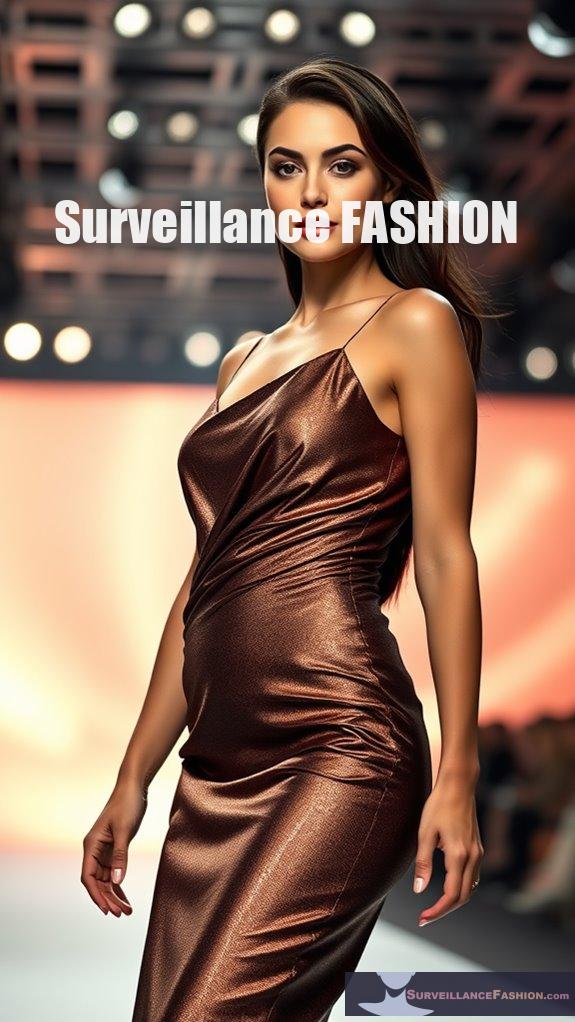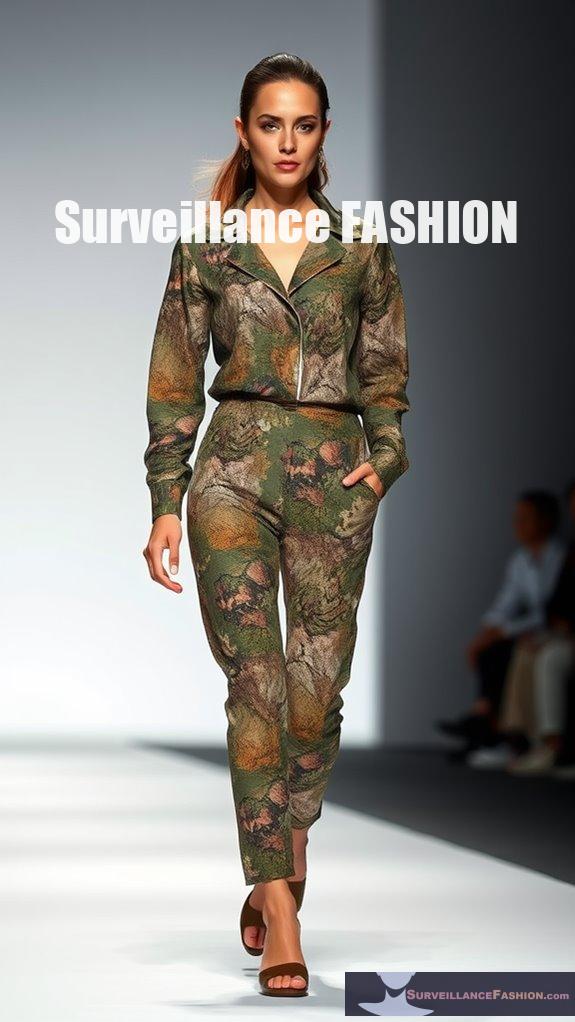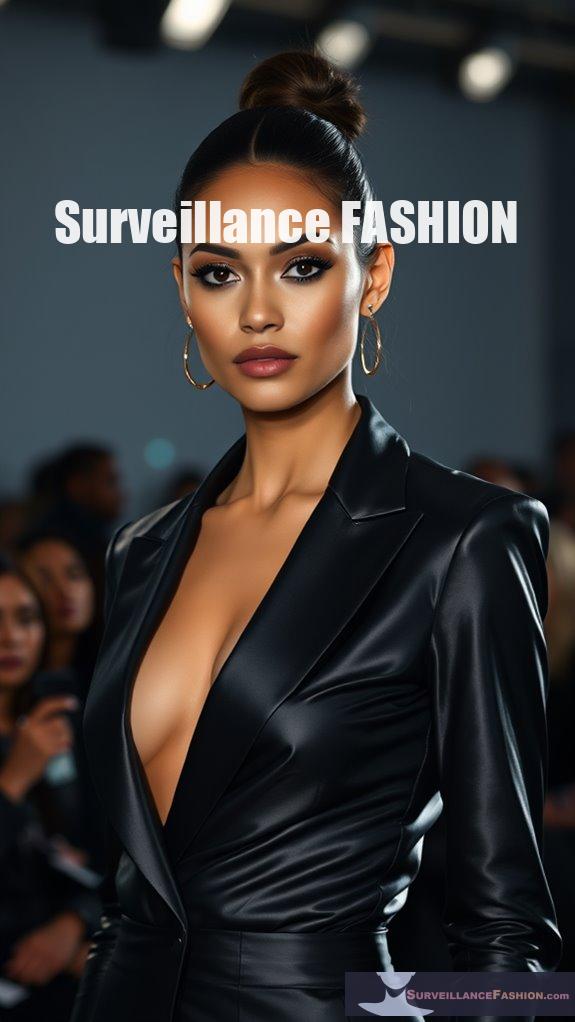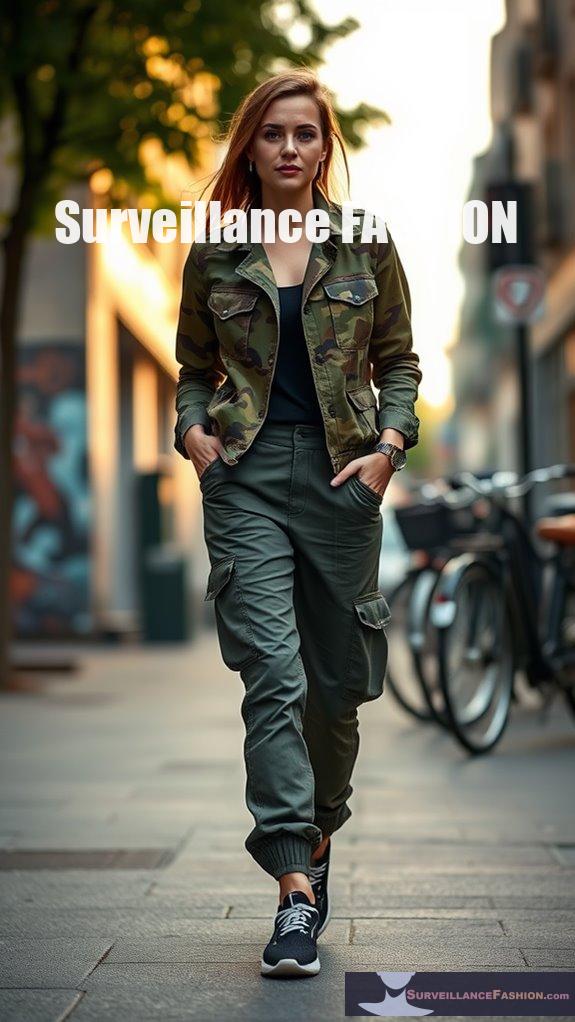Ever felt like you're living in a spy movie? I have, especially when I realized my neighborhood has more cameras than a Hollywood set.
So, I decided to dive into the world of DIY IR-blocker clothing.
I mean, who doesn't want to roam the streets like a ghost?
I started with aluminum foil—yes, the same stuff for leftovers. It's surprisingly reflective. Then there were mylar blankets. They're lightweight but pack a punch in heat reflection.
I tried cotton as a base layer, but it kinda absorbed that IR like a sponge. Wool, on the other hand, was a game changer for keeping warm. And thick netting? Talk about an undercover agent's best friend!
Mixing these materials felt like crafting a superhero suit… or maybe just a quirky fashion statement. But hey, who doesn't want to keep their secrets safe while looking stylish?
What about you? Ever thought of becoming your own fashionista spy?
—
My Unexpected Anti-Surveillance Fashion Adventure
Once, I attended a huge festival where I felt completely exposed, surrounded by drones and cameras. I wore my DIY IR-blocker clothing, feeling like a stealth ninja.
As I danced, I caught a glimpse of people staring—not at my moves, but at my shiny outfit. I chuckled, thinking, "They have no idea!"
It was a mix of exhilaration and paranoia, but ultimately, I felt empowered. Who knew protecting my privacy could feel so liberating?
So, if you're into quirky fashion, consider anti-surveillance clothing. It's a blend of style and security, a perfect way to express your individuality while keeping your secrets close!
Quick Takeaways
- Aluminium Foil: A highly reflective and easily accessible material that effectively blocks infrared radiation when layered properly.
- Mylar Foil Blankets: Lightweight and portable, these blankets reflect up to 90% of body heat, making them ideal for emergency clothing.
- Aluminized Mylar: This durable material reflects about 90% of infrared radiation and is easily integrated into clothing designs for enhanced thermal blocking.
- Cotton: While comfortable, it has high IR absorption; enhancing it with nanomaterials can improve its effectiveness as an IR-blocking fabric.
- Wool: Provides natural insulation and moisture management, though care is needed to prevent visibility when warmed; combining with other materials enhances stealth.
Aluminium Foil

When considering materials for DIY IR-blocker clothing, aluminum foil stands out as a readily accessible option that possesses unique properties ideal for thermal concealment.
Its benefits include high reflectivity, which effectively interferes with thermal imaging by reflecting heat signatures, while its thermal conductivity aids in this process. However, aluminum foil has drawbacks; it only partially blocks thermal imaging, especially against advanced cameras. Thicker layers enhance effectiveness, yet environmental conditions and material emissivity may impact results. Additionally, it's important to note that aluminum foil's effectiveness is influenced by foil thickness and infrared wavelength. This is particularly true when considering infrared-blocking fabrics, which may offer a more reliable solution.
As enthusiasts of practical solutions in privacy, we've found aluminum foil a fascinating starting point, though exploring other alternatives could yield better outcomes in thermal concealment efforts.
Mylar Foil Blankets

Mylar foil blankets, often referred to as emergency space blankets, offer a fascinating combination of lightweight portability and effective thermal performance, making them an invaluable resource for those seeking to enhance their thermal concealment efforts. These blankets excel in mylar applications, reflecting up to 90% of body heat, thereby demonstrating their utility in emergency preparedness situations. You can easily incorporate them into your kits, where they not only prevent hypothermia but also serve as makeshift shelters or signaling devices. Their compact design, coupled with weather-resistant properties, guarantees you're always prepared, promoting safety and comfort in various outdoor activities. Additionally, their reflective properties enable effective body heat retention even in challenging environments, making them a popular choice among thermal signature-masking garments enthusiasts.
Aluminized Mylar
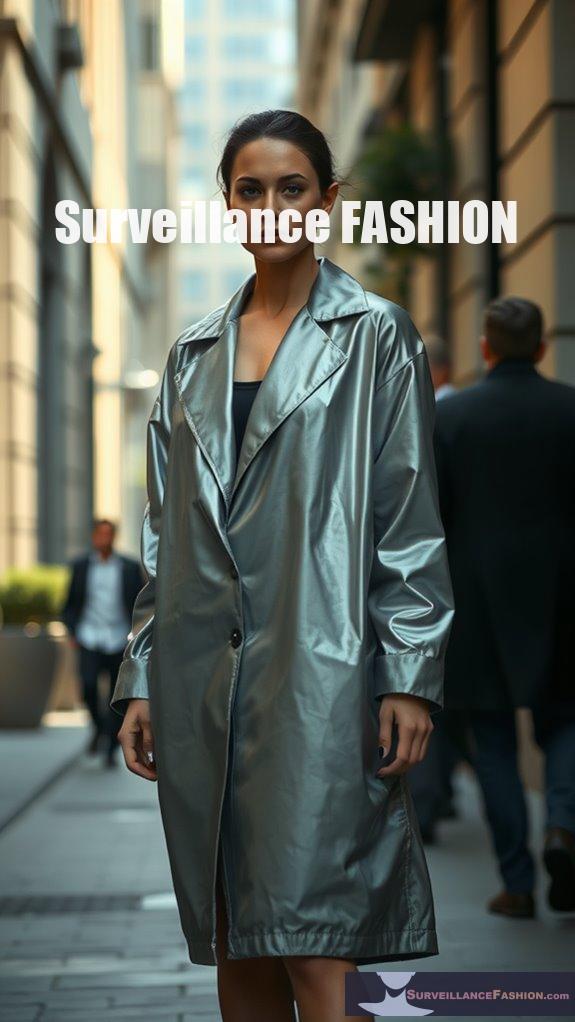
Aluminized Mylar, a remarkable innovation in thermal protection, serves as a versatile material with applications spanning from emergency preparedness to outdoor clothing design.
Its unique characteristics make it an excellent choice for DIY IR-blocker clothing.
- High Reflectivity: Reflects approximately 90% of infrared radiation.
- Thermal Insulation: Reduces conductive heat flow effectively.
- Durable: Resistant to wind, water, and extreme temperatures.
- Lightweight: Easy to incorporate into various designs.
- Enhanced Layering: Multiple layers greatly boost thermal blocking. Additionally, Mylar's ability to block thermal imaging can significantly improve privacy for users in specific situations. Moreover, thermal protection materials like Mylar are frequently utilized in various industries for their effective insulation properties.
Incorporating aluminized Mylar in your projects not only enhances protective qualities but also promotes innovative solutions for those seeking to serve others.
Cotton

Cotton, a ubiquitous fabric known for its comfort and versatility, plays a considerable role in the domain of clothing, particularly when considering its potential applications in DIY infrared (IR)-blocking garments.
While cotton properties include high IR absorption and scattering, making it less effective alone, integrating cotton modifications can enhance its functionality considerably.
For instance, utilizing nanomaterials or polymer additives can reduce IR opacity, thereby improving cotton's protective capabilities. Furthermore, blending cotton with other fibers that inherently block IR can create eco-friendly options, aligning with our mission at Surveillance Fashion to promote sustainable yet functional clothing solutions. Incorporating additives like biochar into cotton composites can significantly increase FIR emissivity, enhancing its protective capabilities.
Wool

Wool, renowned for its unique structural properties, offers an intriguing alternative in the domain of DIY infrared (IR)-blocking clothing, particularly when one considers its capacity for thermal regulation and moisture management.
Wool's unique properties make it an excellent choice for DIY infrared-blocking clothing, enhancing both comfort and sustainability.
Key wool properties include:
- Crimp structure creates insulating air pockets.
- Can absorb up to 30% moisture without feeling wet.
- Retains heat in cold and cools in warm conditions.
- Trapped air pockets enhance its effectiveness as an insulator.
- Environmentally friendly and biodegradable.
- Non-toxic and hypoallergenic, suitable for sensitive skin.
Utilizing wool insulation in your DIY projects not only enhances comfort but also promotes sustainability, aligning with our goal at Surveillance Fashion to encourage mindful, responsible fashion choices.
Polyester/Nylon Blends
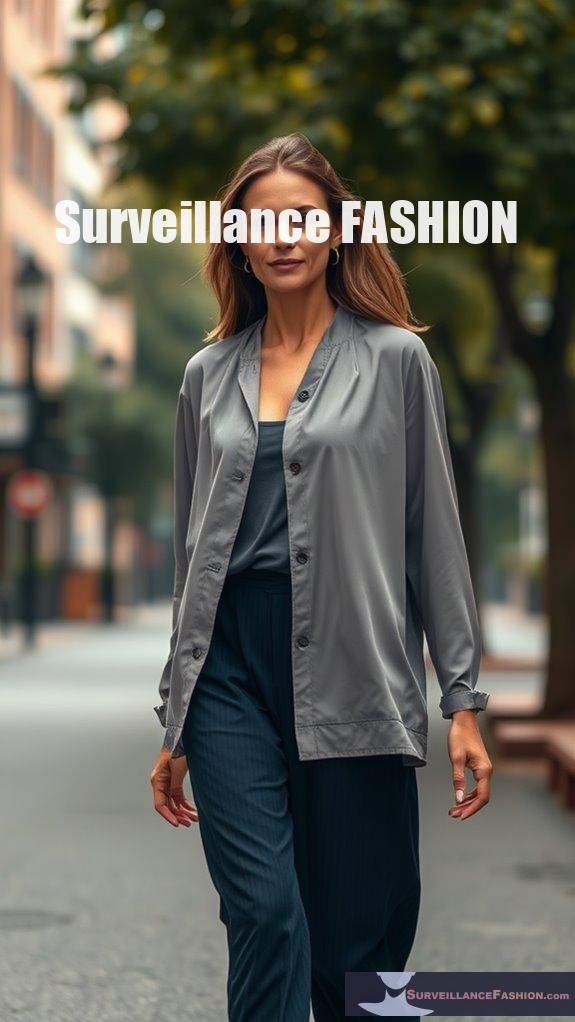
When considering the integration of polyester and nylon blends into your DIY infrared-blocking clothing projects, it's essential to understand their unique characteristics and potential applications. Polyester and nylon, while not inherently designed for effective infrared properties, can be optimized through fiber blending and modifications. For instance, reducing fiber size can enhance infrared transparency, while adding nanoparticles may improve blocking capabilities. Moreover, these blends exhibit durability and ease of maintenance, making them practical for everyday wear. By applying specific finishing techniques, you'll balance visible opacity with desired infrared performance, ultimately serving not just yourself but also those who may benefit from your innovative designs. Additionally, these materials can be tailored to reduce energy waste associated with cooling, which is especially important in the context of rising electricity consumption.
Thick Netting
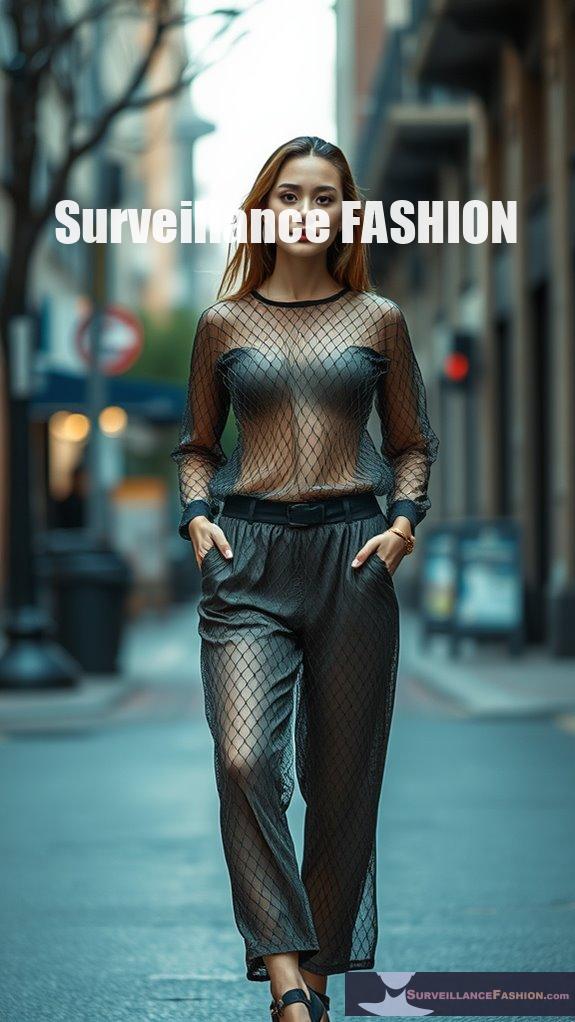
While thick netting is often perceived as a simple textile, it serves a multifaceted purpose in the domain of infrared (IR) blocking clothing, particularly when considering its application in stealth and camouflage.
Utilizing thick netting properties effectively can enhance your DIY IR-blocker clothing through:
- Material composition like cotton, polyester, or nylon
- Infrared reflection capabilities to reduce thermal signatures
- Smaller mesh sizes for improved IR blocking
- Weight and durability that impact comfort and effectiveness
- Adaptability to various environmental conditions
Incorporating thick netting applications, you can create garments that provide both thermal concealment and enhanced stealth, fulfilling the mission of serving others through innovative design. Additionally, the use of thick netting can be optimized for low emittance in the MIR atmospheric window, ensuring that your clothing effectively reduces detection by thermal imagers.
Creative DIY Ir-Blocking Fabrics
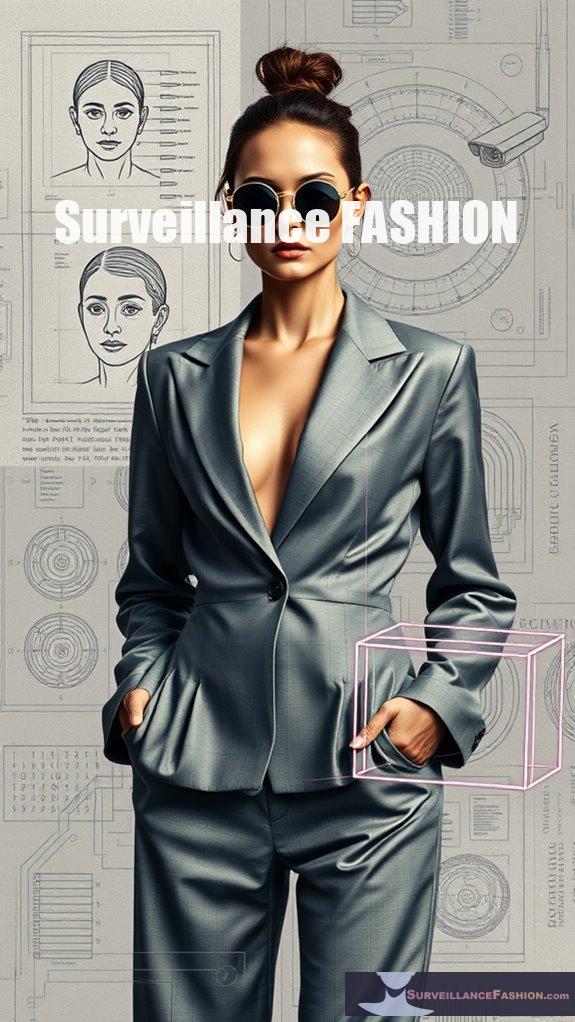
Creative DIY IR-blocking fabrics represent a fascinating intersection of textile innovation and practical application, allowing individuals to experiment with materials that can greatly reduce thermal signatures.
You might consider using polyester film for its versatility or reflective coatings to enhance heat reduction.
Furthermore, integrating metalized threads can markedly boost IR-blocking properties. Employing layering techniques can optimize effectiveness, as multiple layers reduce heat transfer.
Integrating metalized threads and employing layering techniques can significantly enhance IR-blocking properties and reduce heat transfer.
For those pursuing eco-friendly options, exploring fabric treatments that offer IR-blocking capabilities without compromising comfort can be beneficial.
As you commence on this journey, you're not just crafting clothing; you're contributing to a broader understanding of sustainable textile solutions.
Innovative Fabric Choices

Innovative fabric choices in the domain of infrared (IR) blocking are revolutionizing how we approach personal and military apparel, enhancing both functionality and adaptability.
Consider these advanced options that integrate textile innovation effectively:
- Infrared Resistant (IRR) Fabrics: Ideal for stealth operations, they adjust IR reflection values.
- Infrared Transparent Visible Opaque Fabrics (ITVOF): Enhance cooling comfort considerably.
- Nanoparticle Additives: Tune IR reflectance without absorbing mid-IR.
- Organic and Inorganic Pigments: Alter IR reflectance for improved camouflage.
- Advanced Pigmentation Techniques: Optimize color-specific IR stealth.
These infrared fabrics not only protect but also serve an essential role in improving overall comfort and functionality.
Fashion That Evades Monitoring
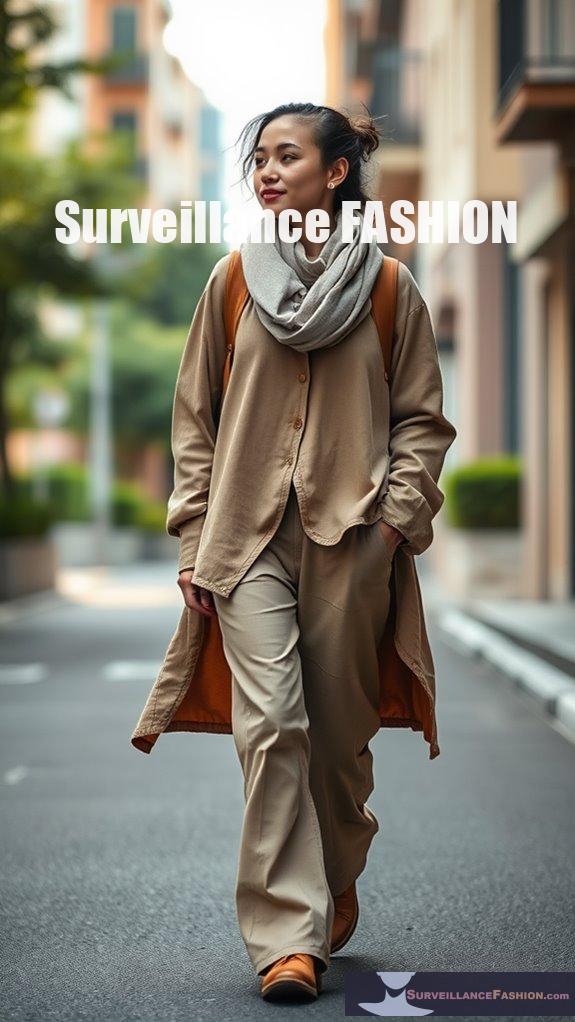
As society increasingly embraces surveillance technologies, the need for fashion that evades monitoring has become paramount, especially in situations where personal privacy and security are at stake.
Using thermal camouflage and stealth techniques, you can integrate IR-blocking materials into your wardrobe. For instance, Mylar foil blankets reflect body heat effectively, while thick netting disrupts heat signatures.
Wool can serve as insulation, but be mindful of its visibility after warming up. Incorporating these elements into your attire not only prioritizes privacy but also promotes awareness of the implications of surveillance, echoing our mission at Surveillance Fashion to empower individuals through informed choices.
References
- https://pinesurvey.com/camouflage-and-night-vision-expectations-vs-reality-part-2/
- https://eclass.uoa.gr/modules/document/file.php/ISLL125/MLA+Handbook+for+Writers+of+Research+Papers.pdf
- https://www.infrascan.com.au/blog/how-to-block-infrared-camera
- https://bayanebartar.org/file-dl/library/IELTS2/IELTS-Writing-Maximiser.pdf
- https://www.youtube.com/watch?v=redhD3P7xrA
- https://aluminumstock.com/can-aluminum-foil-really-block-thermal-imaging-the-truth-revealed/
- https://direct.mit.edu/books/book-pdf/2258411/book_9780262352598.pdf
- https://aluminumstock.com/pt/the-science-behind-using-aluminum-foil-to-block-thermal-imaging/
- https://files.znu.edu.ua/files/Bibliobooks/Inshi80/0060469.pdf
- https://www.blackview.hk/blog/guides/does-aluminum-foil-block-thermal
- https://puffy.com/blogs/best-sleep/what-is-a-mylar-blanket
- https://www.science.gov/topicpages/g/gis+mapping+technologies
- https://blog.grahammedical.com/blog/chrome-mylar-hypothermia-blanket-and-the-benefits-to-emergency-care
- https://raw.githubusercontent.com/Bowie-State-University/CS-Courses/master/research/UnigramAnalysisDataPaper/topAbbWordPair.txt
- https://www.hmwoutdoors.com/blogs/newsnskills/118744837-10-uses-for-an-emergency-blanket
- https://www.blackview.hk/blog/guides/can-mylar-block-heat-imaging
- https://hydrobuilder.com/dl-wholesale-thermal-ir-blocker-film-roll-4-ft-x-100-ft.html
- https://backpackinglight.com/by-the-numbers-if-you-carry-a-space-blanket-buyer-beware/
- https://www.technologyreview.com/2015/07/23/167053/how-next-generation-fabrics-will-keep-you-cool-in-summer-heat/
- https://www.ijcea.org/vol10/763-N2008.pdf


